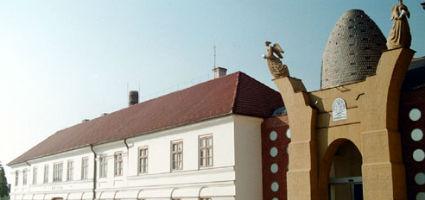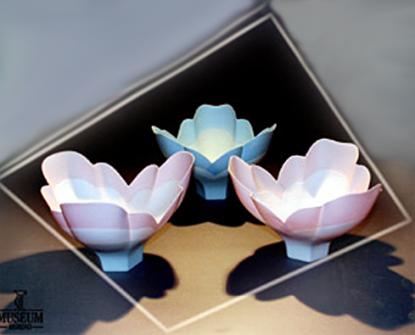2024. April 23. Tuesday
Herend Porcelain Art Museum Foundation - Herend
 |
Address: 8440, Herend Kossuth Lajos utca 140.
Phone number: (88) 523-197, (88) 523-179
E-mail: cassa.muzeum@herend.com
Opening hours: 03.02-11.04.: Tue-Sat 9:30-16:00
14.04-25.10.: Mon-Sun 9:00-17:30 27.10-19.12.: Tue-Sat 9:30-16:00 |
The exhibition has closed for visitors.
2004.03.18. - 2004.08.08.
Museum tickets, service costs:
|
Ticket for adults
|
500 HUF
|
|
|
Ticket for students
|
200 HUF
|
|
|
Ticket for pensioners
|
400 HUF
|
|
|
Guide
|
1500 HUF
|
|
|
Guide
|
3000 HUF
|
I have had close links with Herend Porcelain since childhood, for I was born in the nearby village of Szentgál. Herend always meant to my mind a treasure as fine as a jewel, whose aura ever conveys the care, refinement and enthusiasm of its makers. For that reason, I call every piece of Herend, even the lowliest saucer, a work of art in the finest sense of the word.

I turn, as a designer, to the 'white gold' of the porcelain material with the same respect, witnessing day by day its unexampled metamorphosis, as the fluid paste hardens to its final shape, translated by the heat of the kiln, into one of the hardest materials on earth. This is an aristocratic, sensitive material, but one that with a little designing ingenuity, can be made to convey indirectly the tectonics of stone, the layers of minerals and the organic structures of plants. It can be paper thin like the petals of flowers, as evocatively translucent as alabaster, or as robust as rock-as I will. It almost seems to breathe, a living material. Alongside my traditional works, I have always sought to express contemporary ideas in this classic material, and thereby entice a younger generation to Herend.
Most of my work consists of organic porcelain, which means that my shapes are inspired by natural phenomena and the works themselves are built up organically, as Nature does, layer by layer, or petal by petal, in the case of the thin tinted porcelain layers of my Petal Bowl Collection. However, the layered vases and plates reminiscent of coral or flowers conjure up Nature in an abstract way, not a reproductive one. That was also how I thought when I was making the rose windows of tinted, inlaid, pierced porcelain. On the other hand, I cannot avoid a dash of humour, derived from my temperament, as I mould and condense my mythological figures into grotesque pyramids and bricks, shutting them irrevocably into ancient human symbols.
The main role in all my collections so far has been played by the ancient skills of the manufactory: craftsmanship and 'manual intelligence', the most important tradition at Herend. My principle has always been to live by that tradition, but create for today. I see to preserve the material nature of porcelain, while creating, by hand and with original techniques, a new aesthetic quality, something personal, original and emblematically recognizable.

I turn, as a designer, to the 'white gold' of the porcelain material with the same respect, witnessing day by day its unexampled metamorphosis, as the fluid paste hardens to its final shape, translated by the heat of the kiln, into one of the hardest materials on earth. This is an aristocratic, sensitive material, but one that with a little designing ingenuity, can be made to convey indirectly the tectonics of stone, the layers of minerals and the organic structures of plants. It can be paper thin like the petals of flowers, as evocatively translucent as alabaster, or as robust as rock-as I will. It almost seems to breathe, a living material. Alongside my traditional works, I have always sought to express contemporary ideas in this classic material, and thereby entice a younger generation to Herend.
Most of my work consists of organic porcelain, which means that my shapes are inspired by natural phenomena and the works themselves are built up organically, as Nature does, layer by layer, or petal by petal, in the case of the thin tinted porcelain layers of my Petal Bowl Collection. However, the layered vases and plates reminiscent of coral or flowers conjure up Nature in an abstract way, not a reproductive one. That was also how I thought when I was making the rose windows of tinted, inlaid, pierced porcelain. On the other hand, I cannot avoid a dash of humour, derived from my temperament, as I mould and condense my mythological figures into grotesque pyramids and bricks, shutting them irrevocably into ancient human symbols.
The main role in all my collections so far has been played by the ancient skills of the manufactory: craftsmanship and 'manual intelligence', the most important tradition at Herend. My principle has always been to live by that tradition, but create for today. I see to preserve the material nature of porcelain, while creating, by hand and with original techniques, a new aesthetic quality, something personal, original and emblematically recognizable.
